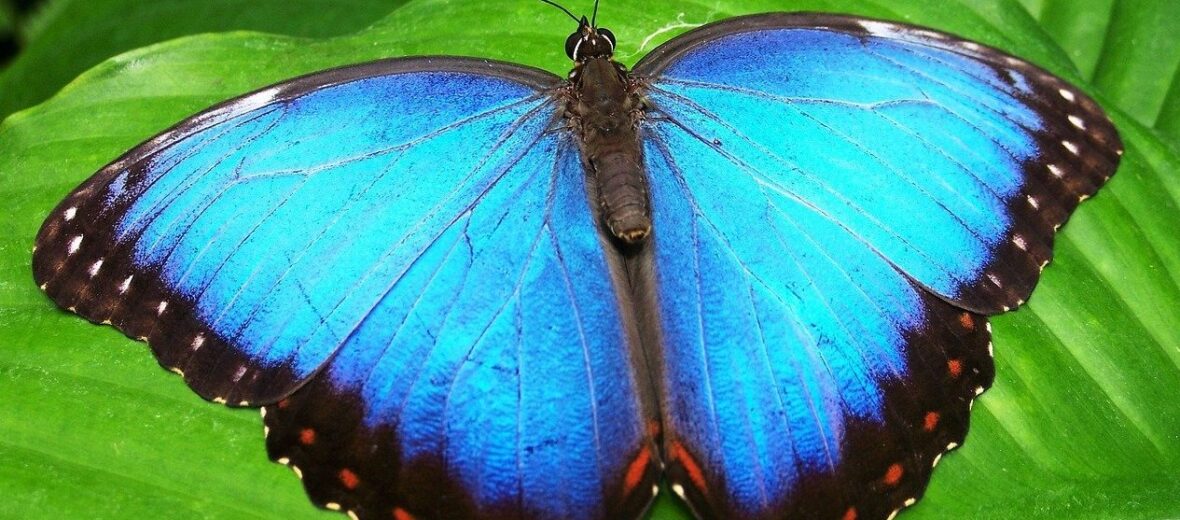
Residing in the Ecuadorian Amazon rainforest is among the most beautiful of all butterflies, the blue morpho butterfly. They can also be found in Central and South America. What is truly fascinating about these critters is that they actually aren’t even blue at all. More on that in a bit. There are 29 known species of blue morpho in the rainforests to date. While not endangered… yet, they are faced with challenges from over collecting, climate change, and habitat destruction.
First the Stats…
Scientific name: Morpho
Length: Up to 4 inches
Wingspan: Up to 8 inches
Lifespan: Up to 115 days
Now on to the Facts!
1.) Cultures view the blue morpho differently. Some believe that they bring wishes and others subscribe to the belief that they are a host to an evil spirit.
2.) Blue morphos are poisonous, if eaten. This helps them, defensively.
3.) The small tufts of hair on the caterpillar’s body can cause mild irritation to sensitive skin. But it’s nothing to write home about.
4.) In what is called constructive interference, when light shines on the small ridges on the butterfly’s scales, only the blue waves are reflected back. So they aren’t actually blue at all, it’s just the prism effect from light waves that makes them so beautifully blue.
5.) The outside of their wings is actually a series of brown pigments.
But wait, there’s more on the blue morpho butterfly!
6.) The brilliant blue appearance on the inside of their wings is believed to be a defense mechanism called flash coloration. When they open their wings, this brilliant coloration distracts a predator just long enough for the butterfly to escape.
7.) A single egg is laid on the underside of a leaf and is semi-transparent and colored light green with brown spots. As the weeks go by, the metamorphosis begins.
Did you know…?
The blue morpho can be born gynandromorphic (being born with both male and female characteristics). This lends to some pretty cool color combinations.
8.) When the egg hatches, the larva will eat its eggs shell, which provides carbohydrates and proteins until it starts to consume it’s host plant.
9.) Once the new butterfly emerges from its chrysalis, it urinates and then starts pumping blood into its wings. The wings expand dramatically in size from the wrinkled up masses they once were.
10.) Blue morpho butterflies are found from sea level up to 4,600 foot elevations.
Now a Short Blue Morpho Butterfly Video!
Be sure to share & comment below! Also, check out the Critter Science YouTube channel. Videos added frequently!
Want to suggest a critter for me to write about? Let me know here.



